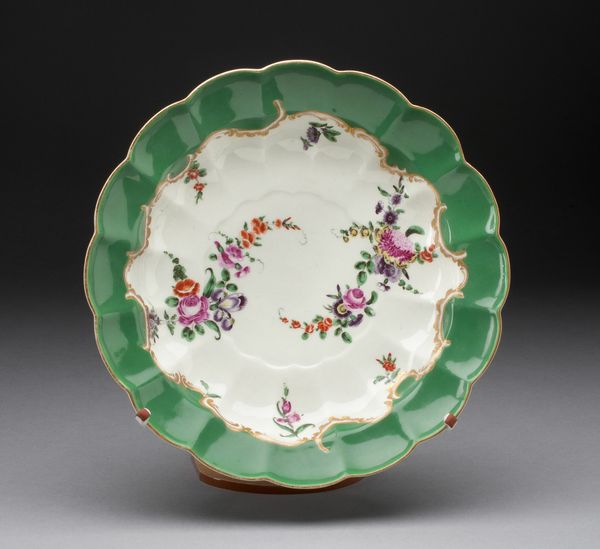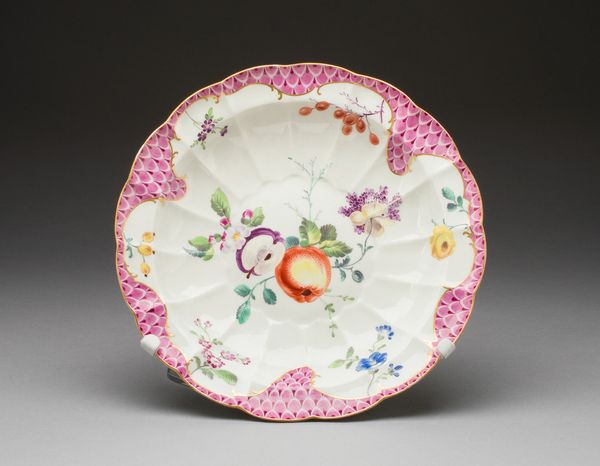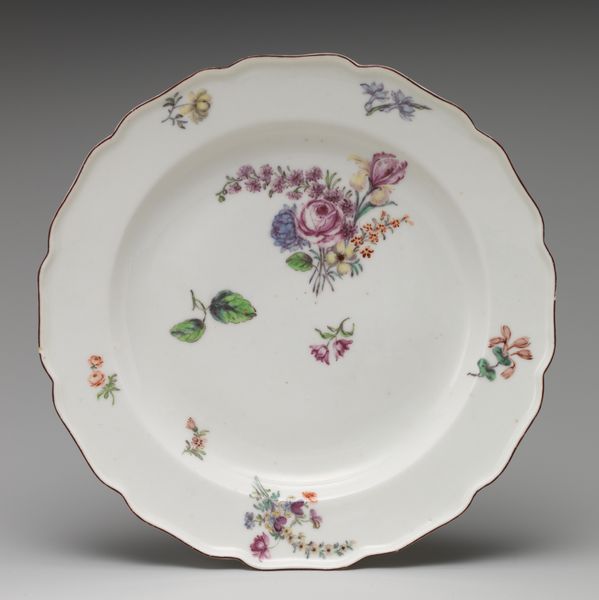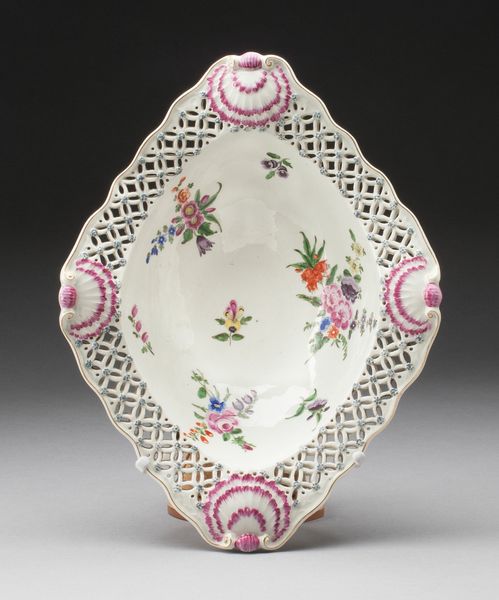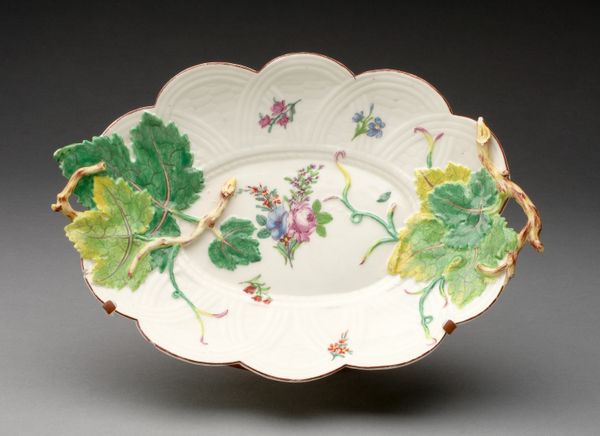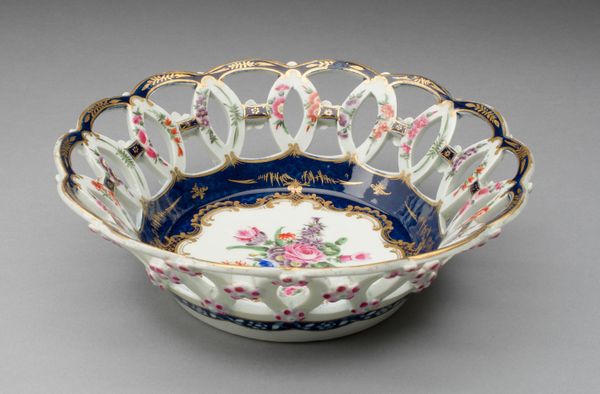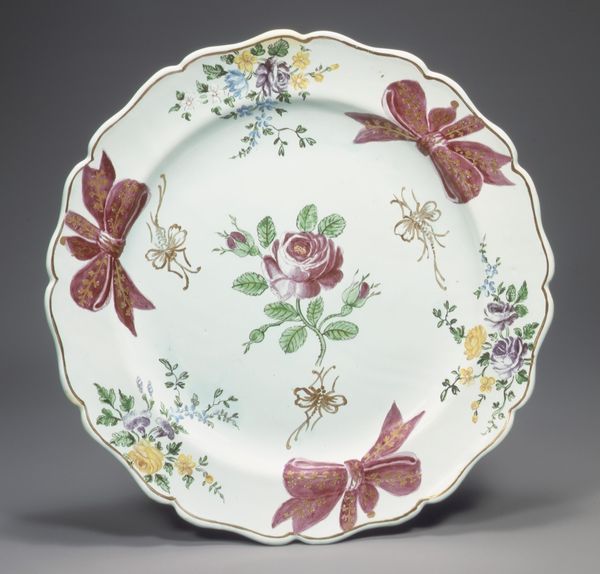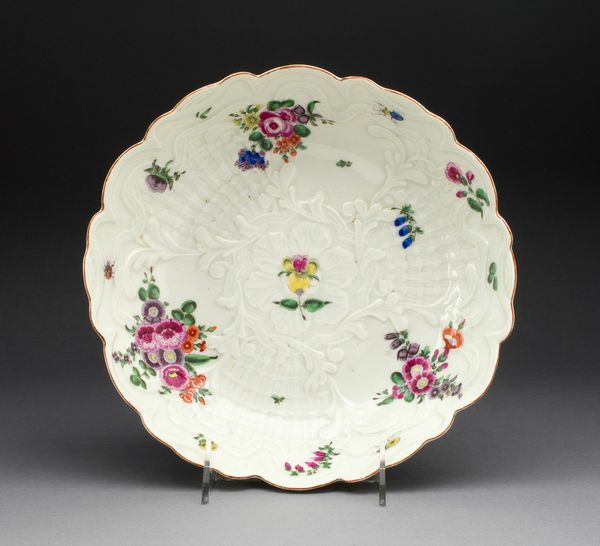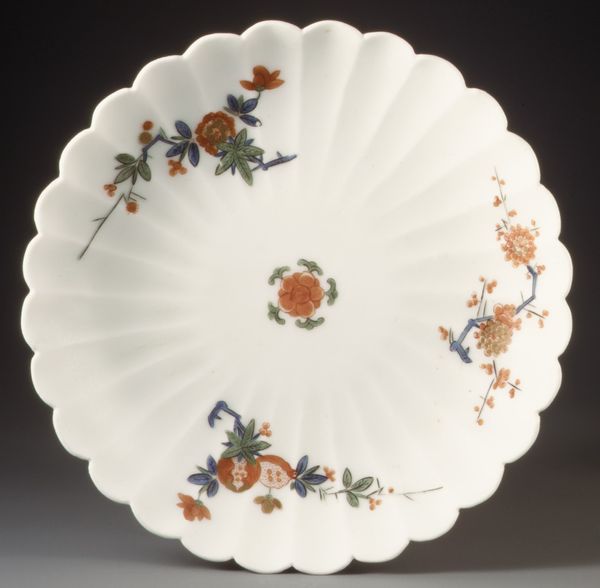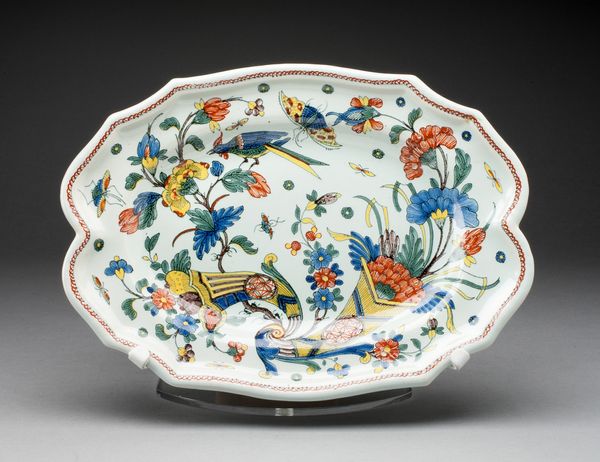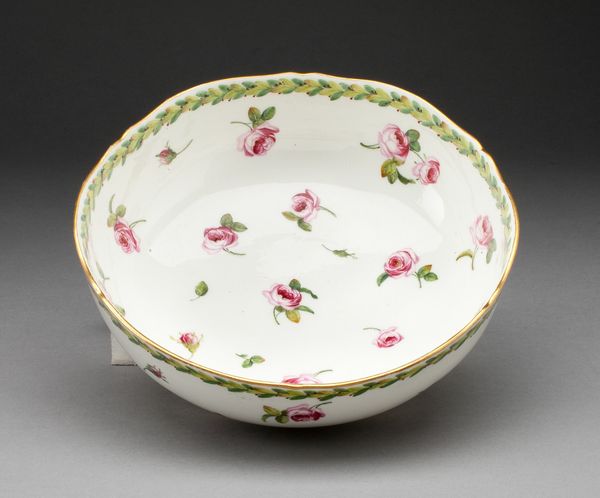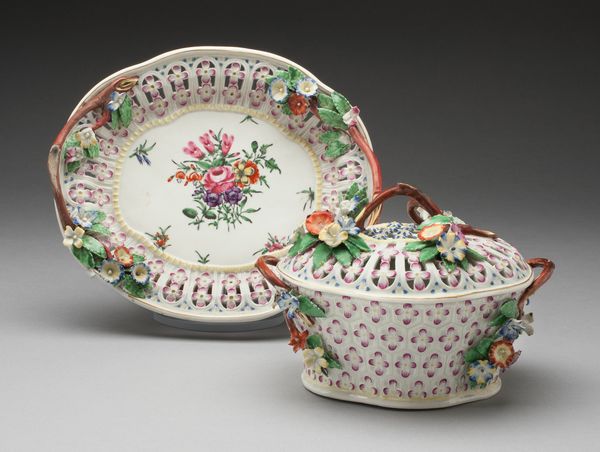
ceramic, porcelain
#
ceramic
#
porcelain
#
ceramic
#
decorative-art
#
rococo
Dimensions: H. 7.6 cm (3 in.); diam. 26.7 cm (10 1/2 in.)
Copyright: Public Domain
Editor: So, here we have a porcelain basket made around 1770 by the Worcester Royal Porcelain Company. The Art Institute of Chicago is lucky to have this delicate object. It looks incredibly fragile. How do you interpret a piece like this? Curator: Well, looking at this basket through a historical lens, it is more than just a pretty object; it's a window into 18th-century British society and its fascination with the Rococo style. Editor: Rococo? Curator: Yes, Rococo. Think of the court of Versailles and its emphasis on ornamentation and the delicate pleasures of aristocratic life. British porcelain manufacturers like Worcester sought to emulate this elegance for a growing middle class who wanted to emulate that lifestyle, though slightly more subdued than on the Continent. Who would own such an object? What social performance was being enacted through its display and use? Editor: Ah, it’s about status then! Curator: Precisely! This wasn't just for holding fruit. It was a statement about taste and affluence, cleverly marketed to signal a certain kind of domestic sophistication. The flowers painted inside? They’re not just decorative; their specific arrangements and species would have been imbued with meaning, carefully coded and understood within that social context. And, notice the openwork design – that's all hand-crafted, an incredible display of skill designed to impress. Editor: So, this seemingly simple basket becomes quite complex when you consider the cultural and economic forces that shaped its creation and use. Curator: Exactly. And understanding those forces allows us to see beyond the aesthetic and appreciate its role in shaping social identities and aspirations of the period. Editor: I'll never look at decorative arts the same way. There’s always so much more going on than meets the eye. Curator: That's the beauty of art history; every object has a story to tell.
Comments
No comments
Be the first to comment and join the conversation on the ultimate creative platform.

